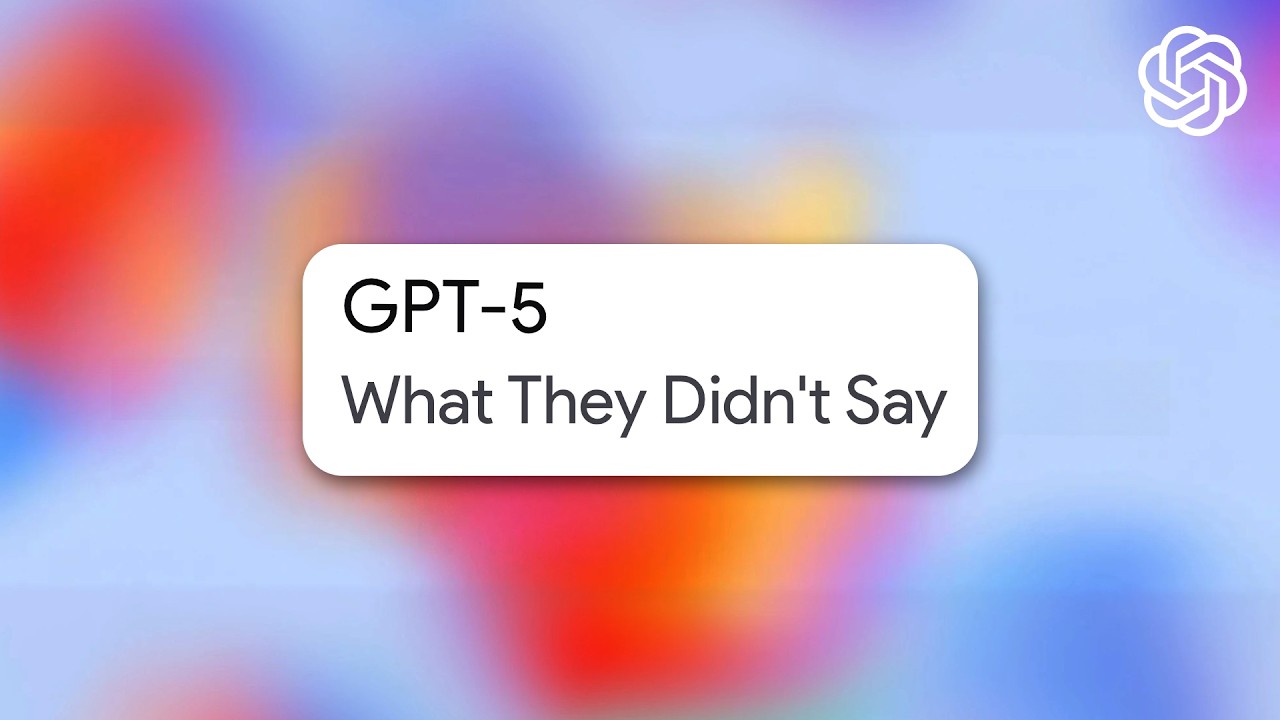The video critically analyzes OpenAI’s GPT-5 presentation, highlighting its multi-model system that improves speed and cost-efficiency, especially for coding and creative tasks, while noting presentation flaws and that GPT-5 is not a dramatic leap beyond GPT-4. Despite promising advancements, the presenter remains cautiously optimistic, emphasizing the need for further testing to assess GPT-5’s true impact and capabilities.
The video provides a detailed analysis of OpenAI’s recent GPT-5 presentation, highlighting both what was said and what was notably absent. The presenter found the presentation somewhat awkward and staged, lacking the polish of major tech events like Apple’s. There were also some glaring errors in the slides, such as incorrect benchmark comparisons, which led to skepticism about the claims made. Despite these presentation flaws, the presenter appreciates the more informal live streams where OpenAI’s CEO, Sam Altman, interacts more naturally.
Regarding the GPT-5 model itself, the video explains that it is not a single model but rather a system or ecosystem of multiple models working together. OpenAI uses a routing system to allocate prompts to different models depending on the complexity of the task, which helps reduce computational costs significantly. This multi-model approach allows for faster and cheaper responses, especially for simpler queries, while reserving more powerful reasoning models for complex problems. The model also incorporates agentic loops, such as testing and refining code internally, which enhances its capabilities in coding and other reasoning-heavy tasks.
The video also discusses the focus areas of GPT-5, noting a strong emphasis on creative writing, health, and coding. OpenAI has expanded its post-training teams to specialize in these domains, improving the model’s performance and safety, especially in sensitive areas like healthcare. This is seen as a positive step, given the potential legal and ethical challenges involved. However, the presenter cautions that while GPT-5 shows improvements, it does not represent the dramatic leap forward that GPT-4 did, and some benchmarks reveal that it is not yet the undisputed leader in all areas.
On the technical and pricing front, GPT-5 offers impressive improvements in speed and cost-efficiency. The model supports a large context window of 400,000 tokens with up to 128,000 tokens for output, enabling tasks like rewriting entire novels. Pricing is competitive, with different tiers such as GPT-5 Mini and Nano offering cheaper options for less demanding use cases. The presenter speculates that OpenAI might be using lower precision training techniques to achieve these gains, although this is not officially confirmed. The pricing and performance improvements could make GPT-5 a strong contender against competitors like Claude and Gemini, especially for coding applications.
In conclusion, the presenter finds GPT-5 to be an interesting but somewhat underwhelming release compared to the excitement around GPT-4. The multi-model system and cost savings are promising, but the presentation and some benchmark results leave questions about whether GPT-5 will surpass existing models in all domains. The presenter plans to conduct further tests, particularly focusing on coding tasks and agentic capabilities, and invites viewers to share their thoughts on the presentation and the model’s potential impact. Overall, GPT-5 represents a step forward but not a revolutionary breakthrough.
